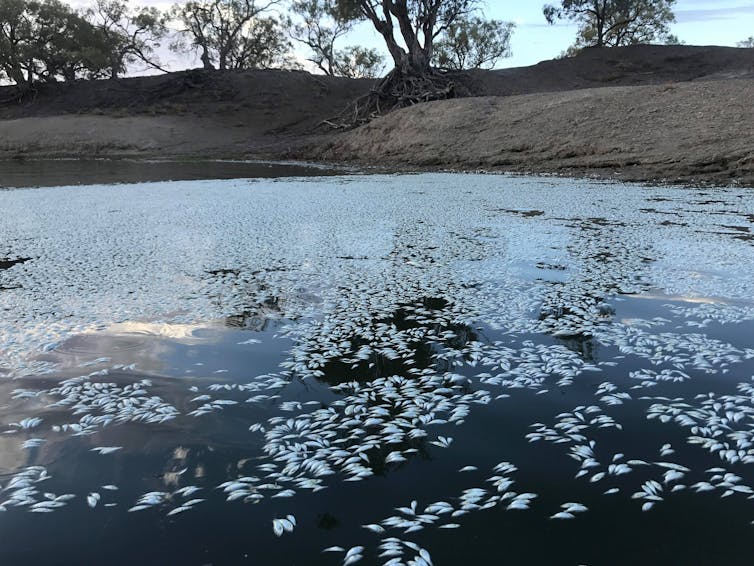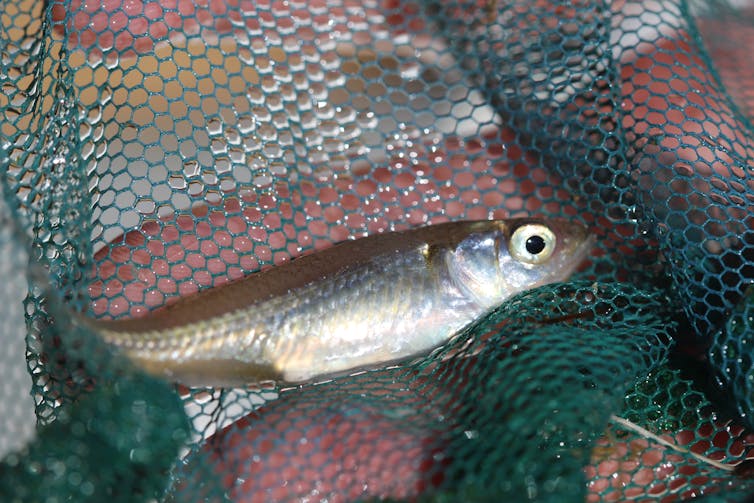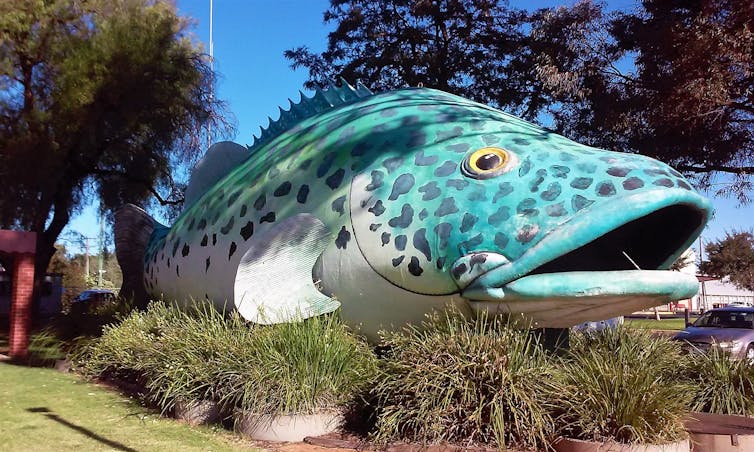Don't count your fish before they hatch: experts react to plans to release 2 million fish into the Murray Darling
- Written by Lee Baumgartner, Professor of Fisheries and River Management, Institute for Land, Water, and Society, Charles Sturt University
The New South Wales government plans to release two million native fish into rivers of the Murray-Darling Basin, in the largest breeding program of its kind in the state. But as the river system recovers from a string of mass fish deaths, caution is needed.
Having suitable breeding fish does not always guarantee millions of healthy offspring for restocking. And even if millions of young fish are released into the wild, increased fish populations in the long term are not assured.
For stocking to be successful, fish must be released into good quality water, with suitable habitat and lots of food. But these conditions have been quite rare in Murray Darling rivers over the past three years.
We research the impact of human activity on fish and aquatic systems and have studied many Australian fish restocking programs. So let’s take a closer look at the NSW government’s plans.
 A mass fish kill at Menindee in northern NSW in January 2019 depleted Fisk stocks.
AAP
A mass fish kill at Menindee in northern NSW in January 2019 depleted Fisk stocks.
AAP
Success stories
According to the Sydney Morning Herald, the NSW restocking program involves releasing juvenile Murray cod, golden perch and silver perch into the Darling River downstream of Brewarrina, in northwestern NSW.
Other areas including the Lachlan, Murrumbidgee, Macquarie and Murray Rivers will reportedly also be restocked. These species and regions were among the hardest hit by recent fish kills.
Fish restocking is used worldwide to boost species after events such as fish kills, help threatened species recover, and increase populations of recreational fishing species.
Since the 1970s in the Murray-Darling river system, millions of fish have been bred in government and private hatcheries in spring each year. Young fish, called fingerlings, are usually released in the following summer and autumn.
Read more: Australia, it's time to talk about our water emergency
There have been success stories. For example, the endangered trout cod was restocked into the Ovens and Murrumbidgee Rivers between 1997 and 2006. Prior to the restocking program, the species was locally extinct. It’s now re-established in the Murrumbidgee River and no longer requires stocking to maintain the population.
In response to fish kills in 2010, the Edward-Wakool river system was restocked to help fish recover when natural spawning was expected to be low. And the threatened Murray hardyhead is now increasing in numbers thanks to a successful stocking program in the Lower Darling.
After recent fish kills in the Murray Darling, breeding fish known as “broodstock” were rescued from the river and taken to government and private hatcheries. Eventually, it was expected the rescued fish and their offspring would restock the rivers.
 A Murray hardyhead after environment agencies transplanted a population of the endangered native fish.
North Central Catchment Management Authority
A Murray hardyhead after environment agencies transplanted a population of the endangered native fish.
North Central Catchment Management Authority
Words of caution
Fish hatchery managers rarely count their fish before they hatch. It’s quite a challenge to ensure adult fish develop viable eggs that are then fertilised at high rates.
Once hatched, larvae must be transported to ponds containing the right amount of plankton for food. The larvae must then avoid predatory birds, be kept free from disease, and grow at the right temperatures.
Read more: Last summer's fish carnage sparked public outrage. Here's what has happened since
When it comes to releasing the fish into the wild, careful decisions must be made about how many fish to release, where and when. Factors such as water temperature, pH and dissolved oxygen levels must be carefully assessed.
Introducing hatchery-reared fish into the wild does not always deliver dramatic improvements in fish numbers. Poor water quality, lack of food and slow adaptation to the wild can reduce survival rates.
In some parts of the Murray-Darling, restocking is likely to have slowed the decline in native fish numbers, although it has not stopped it altogether.
Address the root cause
Fish stocking decisions are sometimes motivated by economic reasons, such as boosting species sought by anglers who pay licence fees and support tourist industries. But stocking programs must also consider the underlying reasons for declining fish populations.
 Swan Hill, home to a larger-than-life replica of the Murray cod, is just one river community that relies on anglers for tourism.
Flickr
Swan Hill, home to a larger-than-life replica of the Murray cod, is just one river community that relies on anglers for tourism.
Flickr
Aside from poor water quality, fish in the Murray Darling are threatened by being sucked into irrigation systems, cold water pollution from dams, dams and weirs blocking migration paths and invasive fish species. These factors must be addressed alongside restocking.
Fish should not be released into areas with unsuitable habitat or water quality. The Darling River fish kills were caused by low oxygen levels, associated with drought and water extraction. These conditions could rapidly return if we have another hot, dry summer.
Stocking rivers with young fish is only one step. They must then grow to adults and successfully breed. So the restocking program must consider the entire fish life cycle, and be coupled with good river management.
The Murray Darling Basin Authority’s Native Fish Recovery Strategy includes management actions such as improving fish passage, delivering environmental flows, improving habitat, controlling invasive species and fish harvest restrictions. Funding the strategy’s implementation is a key next step.
Looking ahead
After recent rains, parts of the Murray Darling river system are now flowing for the first time in years. But some locals say the flows are only a trickle and more rain is urgently needed.
Higher than average rainfall is predicted between July and September. This will be needed for restocked fish to thrive. If the rain does not arrive, and other measures are not taken to improve the system’s health, then the restocking plans may be futile.

